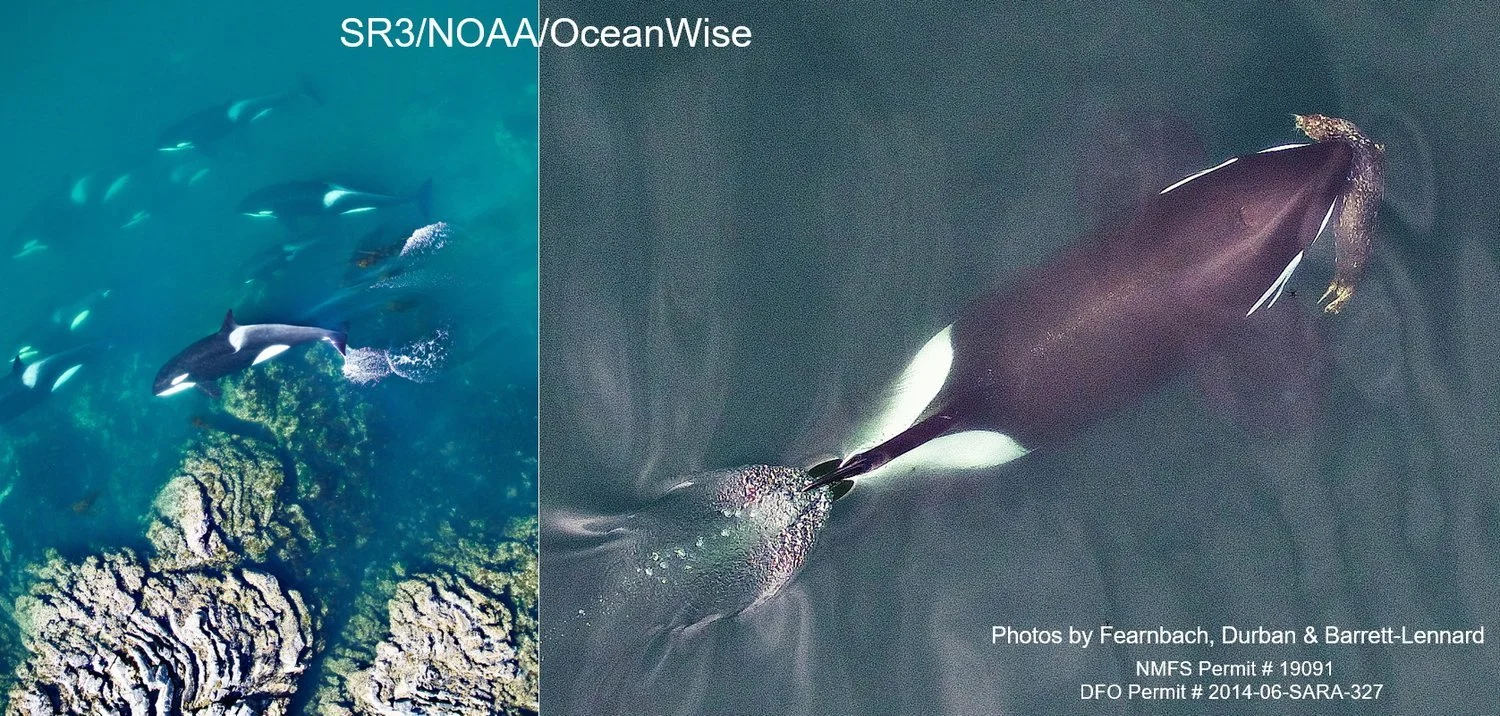New Publication on Size, Growth, and Body Condition of Mammal-Eating Bigg’s Killer Whales
A new publication featuring SR3’s non-invasive photogrammetry research on killer whales was published this week in the scientific journal Marine Mammal Science (read the paper here). The paper is titled “Morphometrics of mammal‐eating killer whales from drone photogrammetry, with comparison to sympatric fish‐eating killer whales in the eastern North Pacific”. The study was based on drone images collected in the U.S. and Canada by SR3’s Holly Fearnbach and John Durban, working collaboratively with Lance Barrett-Lennard from Ocean Wise. Analysis by Chloe Kotik, a graduate student at the University of California San Diego, provided the first data on length, growth and body condition of free-swimming Bigg’s killer whales (BKWs), from the West Coast Transient population of mammal-eating killer whales. These measurements were compared to data that we have previously published on length, growth and body condition of endangered Southern Resident killer whales (SRKWs), which differ in their diet by their preference for fish, particularly Chinook salmon. Despite having overlapping ranges, these BKWs and SRKWs have been experiencing contrasting population trajectories, with SRKWs declining in abundance, while BKWs have been increasing in recent decades. This new study also found BKWs to be longer and in better body condition than SRKWs, which we suggest at least partially reflects responses to the more abundant prey available for BKWs (e.g. harbor seals, sea lions and porpoise), compared to the limited Chinook salmon available to SRKWs.
Aerial images showing a group of Bigg’s killer whales hunting for harbor seals along a rocky reef (Left) and an adult male Bigg’s killer surfacing with an unlucky harbor seal in its mouth (Right). Images collected non-invasively using a drone flown > 100ft above the whales under Permit # 19091 from the National Marine Fisheries Service (NMFS) and SARA license 2014-06 SARA-327 from the Department of Fisheries and Oceans Canada (DFO).

